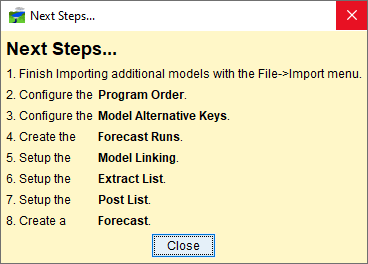Creating a Watershed
The first thing you must do when creating a watershed is to give the watershed a name and description, specify the watershed's location, and establish the system of units and the time zone for the watershed. Once you have configured the new watershed, HEC-RTS generates a new directory hierarchy in the specified watershed directory. The new watershed becomes active in the main window, and the tools needed to configure watershed components become available. At this point you may continue to configure the new watershed by adding layers, setting preferences for the map window, creating time series icons, establishing the database connectivity, and configuring models and model alternatives.
To create a watershed:
- From the HEC-RTS main window, click on the Setup tab (Setup Module), from the File menu, click New Watershed. The Create New Watershed dialog (Figure 1) will open.
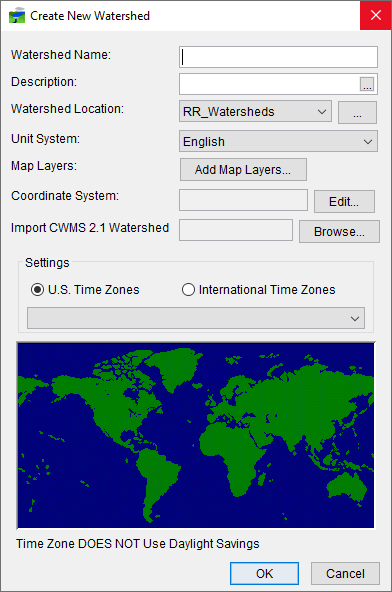
- From the Watershed box (Figure 1), enter a name for the watershed. The watershed name must be less than thirty-two (32) characters and cannot contain any of the following characters: , | / : * ? " < > - {}.
- Enter a description for the new watershed in the Description box that clearly explains what it is.
- From the Watershed Location list, select the watershed location to save the new watershed or add a new location.
- For system units, select either English (U.S. customary units) or SI (System International) from the Unit System list. System units cannot be changed once a watershed is created.
- To add map layers to a watershed, click Add Map Layers button, a Select Map to Add browser (Figure 2) will open. To save the selected map layers to the watershed's map folder, be sure that Create Copy (Figure 2) has been selected. Browse to the location where map layers for the watershed are located. Select a map layer(s), click Open, the Select Map to Add browser will close.
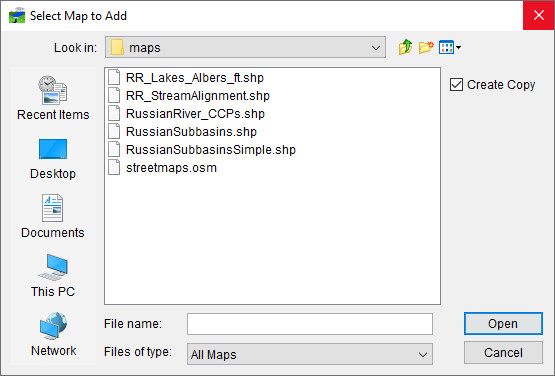
- A Set Watershed Coordinate System window (Figure 3) will open. This window asks would you like to set the watershed's coordinate system to the selected map layer's coordinate system. If you click Yes, the Set Watershed Coordinate System window will close, and in the Coordinate System box (Figure 1), the watershed coordinate system is displayed, skip Step 8. If you click No, the Set Watershed Coordinate System window will close, and no coordinate system will be set for the watershed, you will need to do Step 8.

- To set the coordinate system of the watershed, click Edit (Figure 1), the Map Coordinate Information dialog will open (Figure 4). Click Load from file, an Open browser will open. Browse to the location of watershed maps, click on a .prj file that is associated with a map layer that is in the correct coordinate system. Click *Open, the Open browser will close, and the Map Coordinate Information dialog (Figure 4) will display the coordinate system. Click OK, the Map Coordinate Information dialog will close, and the Coordinate System box (Figure 1) will display the selected coordinate system.
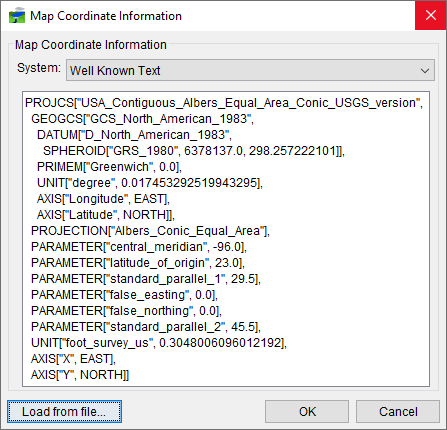
- For the watershed time zone, by default, U.S. Time Zones is selected. From the list (Figure 5), there are eight choices. Select the time zone appropriate for your watershed. See Specifying Time Zones for further discussion on time zones.
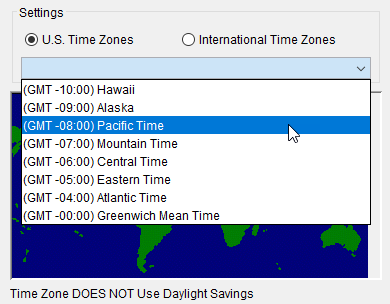
- Click OK, the Create New Watershed dialog (Figure 1) will close. A Watershed Summary dialog will open (Figure 6), which will provide you with information about the watershed that is being created. Review this information, click OK, the Watershed Summary dialog will close (Figure 6).
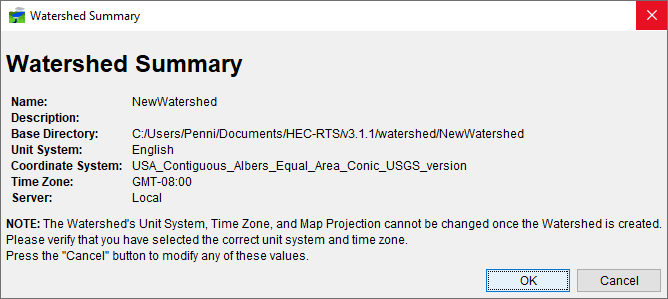
- The watershed will be created and the Next Steps dialog (Figure 7) will open. This dialog provides with information on the next steps to take to configure your new watershed.
